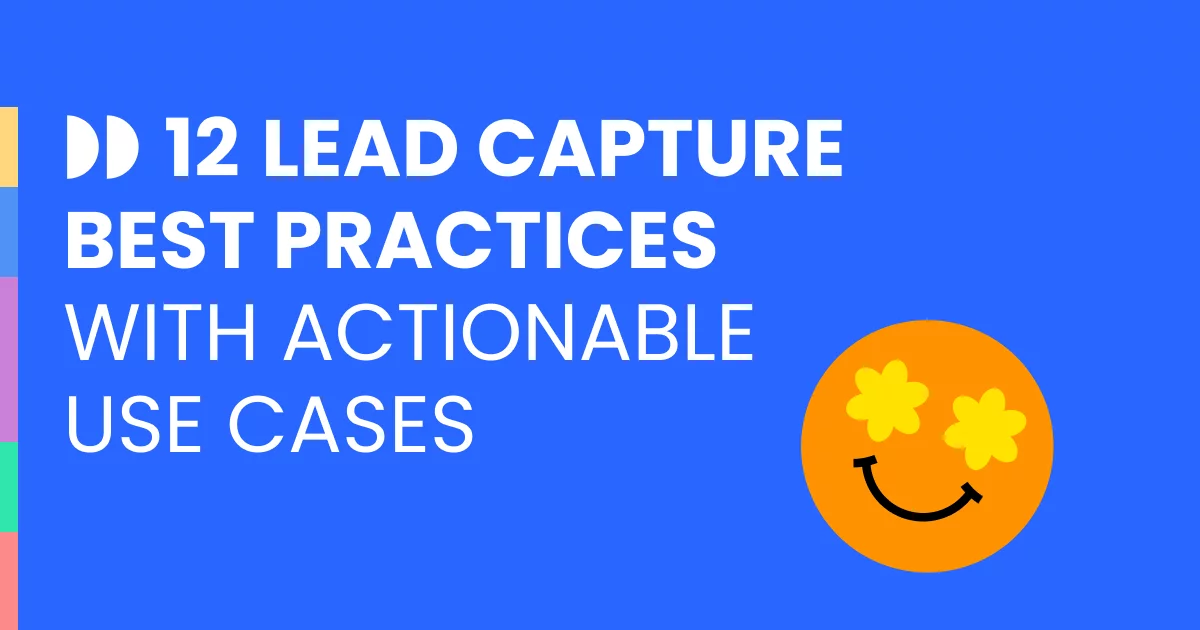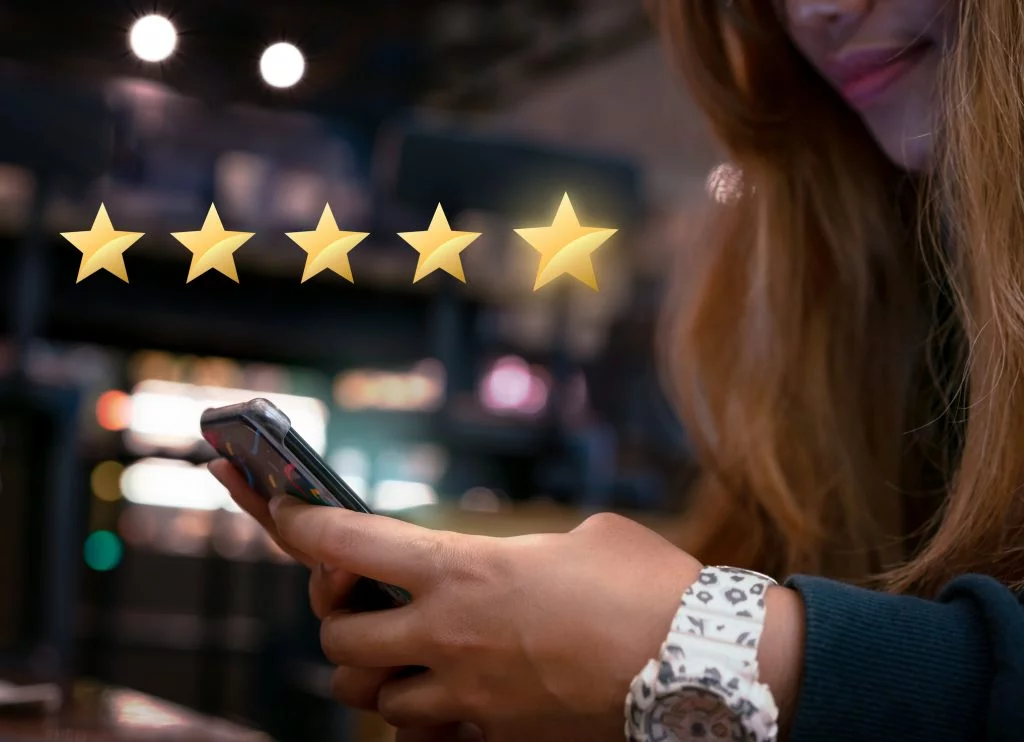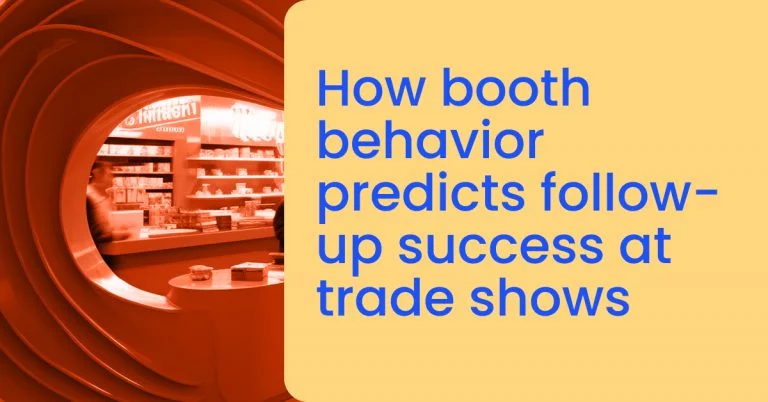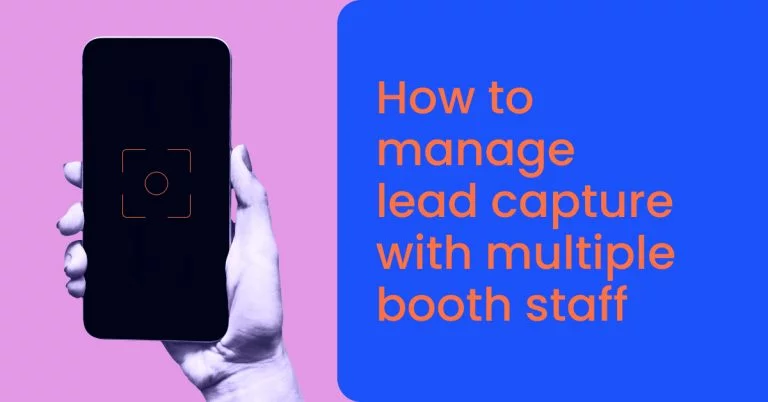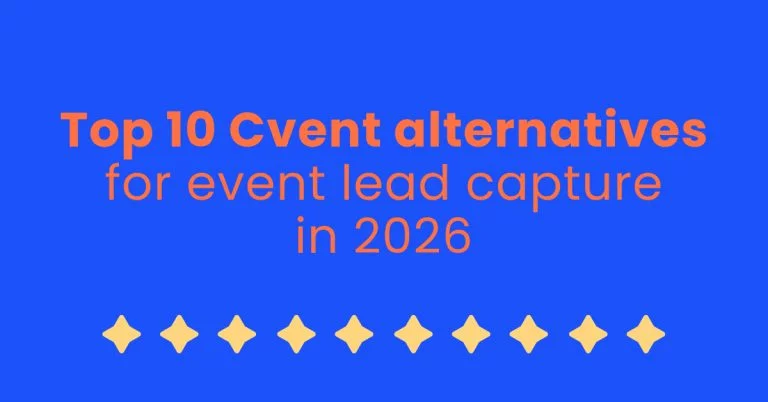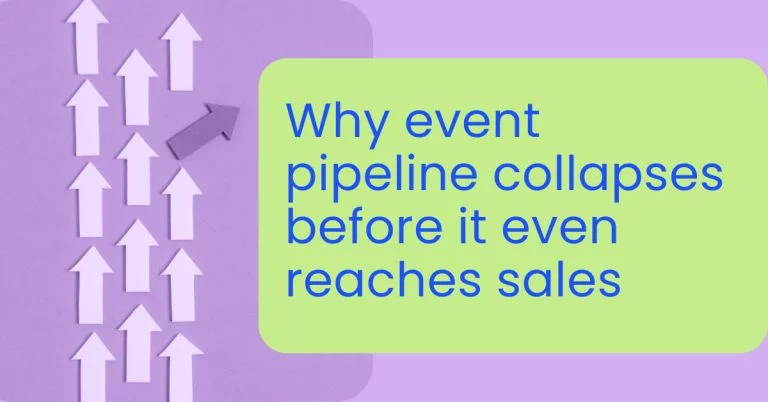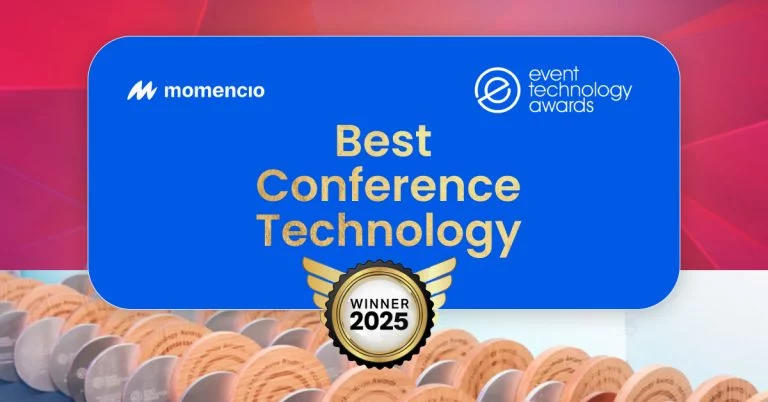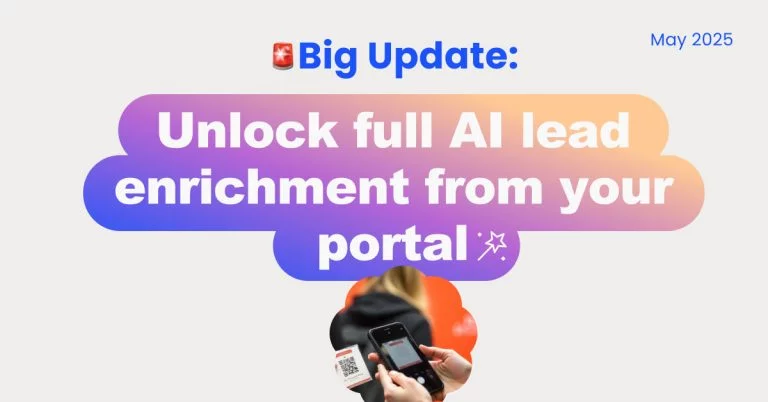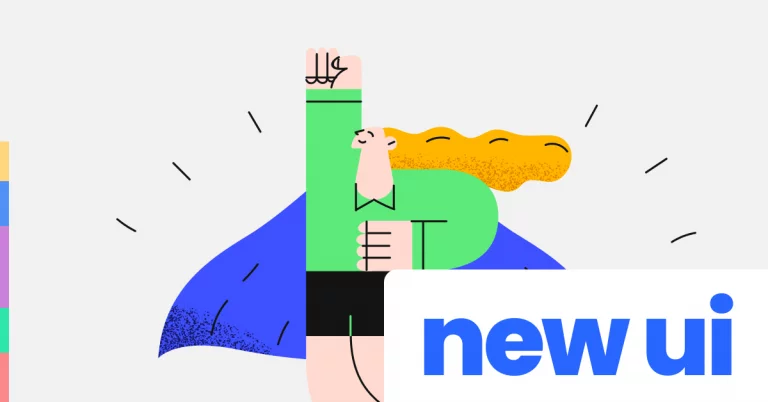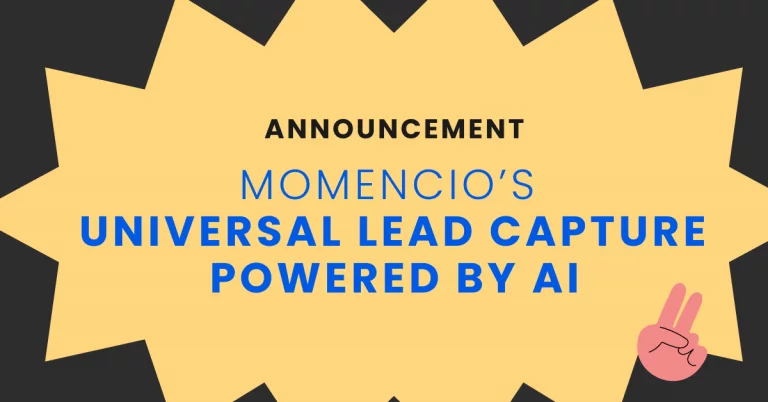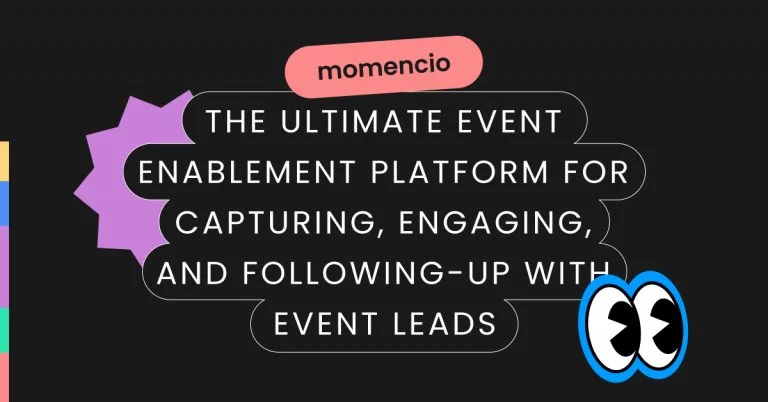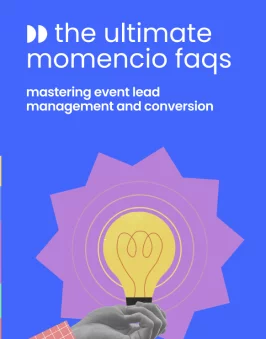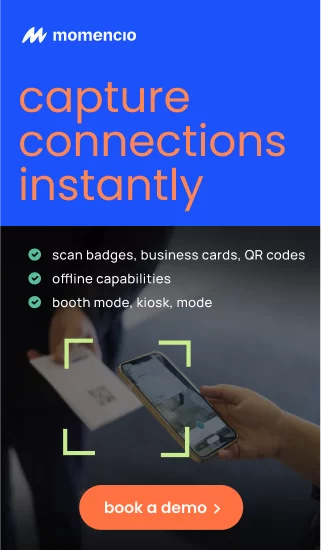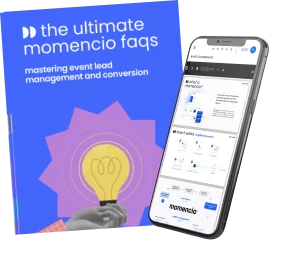Every event professional has been there. You leave an event feeling optimistic, armed with a long list of leads. But as you sit down to follow up, reality sets in. That “promising lead” was actually a casual browser. The person who seemed eager to learn more? Turns out they were only there for the free swag.
It’s frustrating. And it’s also a sign that you’re probably asking the wrong question. Instead of “How do we get more leads?” the better question is: “How do we capture the right leads—and do it in a way that makes them excited to hear from us again?”
79% of event attendees say they would pay more for informative events that are also meaningful or transformative experiences.
The truth is, capturing leads isn’t just about tactics; it’s about intention. It’s about creating moments of real connection at events and using those moments to spark conversations that last well beyond the closing bell.
In this article, we’re going to dive into what makes a lead valuable, the steps to capture them effectively, and 12 lead capture best practices you can start using right now—each one paired with a real-world example so you can see how it works in action.
Ready to stop collecting contacts and start creating opportunities? Let’s go.
Who can be considered a potential lead?
Not all event attendees are created equal, and that’s okay. The magic happens when you know how to spot the ones who matter most—the leads with the potential to actually move the needle for your business. But here’s the catch: potential leads don’t always wear name tags that say, “I’m ready to buy!”
A lead is anyone who expresses genuine interest in what you offer or has a problem your product can solve. It’s not just the people who stop to chat at your booth. It’s the ones who linger nearby, watching a demo or flipping through your brochures. It’s the person who scans your QR code during a session or clicks on a link in your event app.
But identifying leads is about more than observation. It’s about asking the right questions. Are they part of your target audience? Do they have decision-making power, or are they influencers in the buying process? What challenges are they facing that your solution can address?
Once you start filtering attendees through this lens, your focus sharpens. You stop chasing anyone who happens to walk by and start engaging the people who actually want to hear from you.
The bottom line: a lead isn’t just someone who gives you their contact info. It’s someone whose needs align with your expertise—and who’s open to a conversation that could turn into something bigger.
Learn more about lead capture apps and their benefits
Crucial steps for capturing leads at your booth
Capturing leads at an event booth is about more than just waiting for attendees to approach you. It’s an intentional process that starts long before the event and continues well after the doors close. Here’s how you can make sure your booth becomes a lead magnet:
1. Plan with a purpose
Before you set foot at the venue, define your goals. Are you aiming for a specific number of qualified leads? Do you want to drive brand awareness? Clear objectives will guide your strategy and the tools you need.
2. Design an inviting space
Your booth design matters. An eye-catching setup with clear messaging can draw in attendees who might otherwise walk past. Make sure your visuals align with your brand, and don’t underestimate the power of lighting, layout, and even your team’s enthusiasm.
3. Equip your team with tools
Your booth staff should be more than friendly faces—they’re your frontline. Train them to ask open-ended questions, demonstrate your product effectively, and use lead capture tools to document interactions in real-time.
4. Engage with purpose
Think beyond a simple pitch. Offer interactive elements like demos, gamification, or live polls that encourage attendees to spend more time at your booth. The more meaningful the interaction, the more likely they’ll remember you.
5. Make the follow-up easier
Capture details that help personalize your follow-up. Notes on what attendees were most interested in or specific challenges they mentioned can make your post-event outreach feel like a continuation of the conversation, not a cold email.
These steps turn your booth from a simple display into a space for real connections and opportunities—because the best leads aren’t just gathered, they’re earned.
How momencio empowers you to capture leads and close sales
Capturing leads is one thing; turning them into opportunities is another. That’s where momencio steps in. Designed to bridge the gap between event interactions and meaningful follow-ups, momencio doesn’t just help you collect leads—it helps you connect with them in ways that matter.
Capture with precision
With momencio’s badge scanning and business card capture features, you can collect attendee information effortlessly. But it doesn’t stop there. Every lead profile is enriched with context, giving you a clearer picture of who they are and what they’re looking for.
Engage attendees in real time
Momencio lets you tailor the experience right at the booth. Whether it’s delivering customized presentations or sharing content that aligns with the lead’s interests, every interaction is purposeful. And with instant note-taking, your team can capture specific details that will make follow-ups more personalized and effective.
Seamlessly manage post-event follow-ups
Leads often go cold because of poor follow-up processes. Momencio solves this with automated, personalized emails sent directly after the event. You can even include links to microsites designed specifically for each lead, filled with content that keeps the conversation going.
Sync data effortlessly
momencio integrates seamlessly with your CRM, ensuring no details are lost in translation. From engagement scores to the content they interacted with, your sales team has everything they need to pick up where your event team left off.
With momencio, you’re not just gathering contact details—you’re laying the groundwork for conversions. From the initial conversation to the final sale, momencio ensures every lead interaction is maximized.
How to manage your leads
Capturing leads is only half the battle. How you manage them afterward determines whether they stay engaged or fade into the background. Without a structured approach, even the most promising leads can slip through the cracks. Here’s how to stay ahead:
Make prioritization a non-negotiable
Not all leads are created equal, and that’s a good thing. Start by categorizing your leads:
- Hot leads: These are decision-makers or highly interested prospects. They need immediate attention.
- Warm leads: Interested but not ready to commit. They require nurturing.
- Cold leads: Casual inquiries or mismatched prospects. They’re better suited for automated follow-ups or long-term campaigns.
Use lead scoring tools to sort and rank contacts based on engagement, job role, and fit with your offerings. This way, you’ll focus energy where it matters most.
Sync everything to your CRM
Your CRM isn’t just a database; it’s the hub for managing relationships.
- Centralize data: Sync all event notes, interactions, and engagement metrics.
- Segment intelligently: Divide leads by demographics, interests, and behaviors for tailored follow-ups.
- Enable visibility: Sales and marketing teams should share access to ensure no opportunity is lost during the handoff.
Pro tip: Platforms like momencio integrate seamlessly with CRMs, giving your team instant access to enriched lead profiles.
Personalize every follow-up
Generic emails are the fastest way to lose a lead’s interest. Instead:
- Reference specifics from your event conversations— “You mentioned your team struggles with X.”
- Include custom content that addresses their pain points, such as a case study or blog post.
- Use their engagement history to guide the tone and timing of your outreach.
Personalization isn’t about adding their name to the subject line; it’s about proving you listened.
Automate smartly, not blindly
Automation tools don’t replace human connection—they amplify it. Use automation to:
- Send timely thank-you notes: A quick, personalized email immediately after the event shows professionalism.
- Deliver tailored content: Share guides or videos relevant to their challenges.
- Schedule reminders: Follow-up actions like calls or demos can be triggered automatically.
Automation ensures no lead falls through the cracks while giving your team bandwidth for deeper connections.
Nurture with intentionality
Not every lead is ready to buy right now—and that’s okay. For those not in the decision-making phase, focus on:
- Educational content: Provide resources that solve their problems or help them understand your offerings.
- Exclusive updates: Keep them in the loop about new products, webinars, or industry insights.
- Consistent touchpoints: Reach out periodically with valuable information to stay on their radar.
Lead nurturing isn’t about rushing the process; it’s about being present and relevant until they’re ready to engage.
Close the loop with analytics
How do you know if your lead management strategy is working? By tracking results.
- Monitor open rates, response times, and lead conversions.
- Identify gaps in your follow-up process and adapt accordingly.
- Use tools like momencio to analyze engagement trends and improve future campaigns.
Lead management is the bridge between potential and performance. By focusing on prioritization, personalization, and persistence, you can turn one-time event connections into long-term customer relationships.
12 lead capture best practices (with use cases)
Capturing leads at trade shows requires more than good intentions—it demands smart strategies adapted to real-world challenges. Here are 12 practical tips, each paired with a scenario that shows exactly how to implement them at your next event.
1. Define your ideal lead before the event
Before the event, sit down with your team and identify the personas you want to target. Think about their roles, industries, and specific needs. This clarity will help you tailor conversations and prioritize who to engage.
For example: If you are exhibiting at a Healthcare industry conference, instead of targeting all attendees, your team could focus on hospital CIOs and IT directors by preparing questions about their current tech challenges to qualify leads faster.
2. Make your booth impossible to miss
Use bold visuals, interactive elements, and clear messaging to stand out. Your booth should communicate your value proposition in seconds.
For example: At a sustainability expo, if your booth features a touch screen showing how your solution reduces carbon footprints, attendees will be drawn in, and those who engage with the demo can be flagged as warm leads.
3. Gamify the experience
Create an activity that entertains while collecting lead information. Keep it simple and relevant to your brand.
For example: At a manufacturing trade show, you could host a trivia game about industry trends. Participants can use their badge to play, and winners would receive a free consultation—giving you a list of engaged leads to follow up with.
4. Lead with curiosity, not a sales pitch
Start conversations by asking open-ended questions that encourage attendees to share their challenges and goals.
For example: At a retail conference, your team could ask visitors, “What’s the biggest challenge you face with inventory management?” Their answers can guide the conversation and help qualify leads on the spot.
5. Exchange valuable resources for contact details
Offer something attendees want in exchange for their information, such as guides, checklists, or templates.
For example: At a cybersecurity event, you could promote a free eBook on “Top 10 cyber threats in 2025.” Attendees will scan a QR code to download it, entering their details as part of the process.
6. Use live surveys to capture opinions and contacts
Create a quick survey that’s easy for attendees to complete and gives you useful insights.
For example: At a marketing summit, you can ask attendees to rank their biggest challenges via a live poll accessible through a QR code. Participants will receive a summary of the poll results, and you would capture their contact info for follow-up.
7. Take detailed notes for meaningful follow-ups
Record details about each lead during the event—what they’re looking for, pain points, and key takeaways from your conversation.
For example: At a tech expo, your team could use momencio’s smart note-taking feature to log specific needs mentioned by attendees. This ensures follow-ups are personalized and relevant.
8. Sync lead data with your CRM in real-time
Avoid the hassle of manual data entry by syncing lead capture tools directly to your CRM.
For example: At an automotive trade show, your badge-scanning app could connect directly to your CRM, such as HubSpot or Salesforce. Leads could be categorized by interest (e.g., fleet management vs. individual vehicles), streamlining the post-event handoff to customer success.
9. Offer tailored recommendations on-site
Use what you’ve learned during conversations to suggest resources, products, or solutions that address specific needs.
For example: At a finance conference, if an attendee mentions their struggle with compliance reporting, your team could demonstrate how your software simplifies audits, creating an instant connection.
10. Showcase success stories
Use real-world examples to illustrate how your product solves problems. This builds credibility and interest.
For example: At a tech event, you could showcase a sales video of a customer explaining how your product improved their workflow. When attendees ask for more details, you could qualify them as high-priority leads.
11. Make next steps simple and immediate
Create an easy path for attendees to engage further, like scheduling a demo or downloading additional content.
For example: At a logistics expo, your booth could feature a QR code that lets attendees book a free consultation with your team. This creates a seamless follow-up opportunity.
12. Review and refine your strategy post-event
Analyze what worked, identify gaps, and adjust your approach for the next event.
For example: After a trade show, you could use momencio’s real-time analytics to see which marketing collateral garnered the most engagement from leads. You could see whether your live demo converted at a higher rate or your sales videos got more watch time, to be able to double down on your approach for the next event.
Conclusion
Lead capture is the backbone of successful event marketing, but it’s not just about collecting contacts—it’s about creating meaningful connections. By understanding who your ideal leads are, engaging them with purpose, and implementing strategies tailored to real-world trade show dynamics, you can transform fleeting conversations into lasting opportunities.
The 12 best practices outlined in this article give you a roadmap for capturing leads effectively and ensuring they don’t fall through the cracks. Whether it’s designing an interactive booth, gamifying attendee engagement, or leveraging technology like momencio to manage and nurture leads, each step brings you closer to achieving event ROI.
Remember, the quality of your follow-ups is just as important as the quantity of your leads. Personalization, clear next steps, and a commitment to continuous improvement will set you apart in the crowded event space. So, at your next trade show, don’t just show up—show up with a strategy.
FAQs
- What’s the most common mistake when capturing leads at events?
- The most common mistake is prioritizing quantity over quality. Gathering a long list of unqualified contacts may feel productive, but it wastes time and resources in follow-ups. Focus on meaningful interactions that align with your ideal lead profile.
- How can I make my follow-ups stand out?
- Tailor your follow-ups based on the conversations you had at the event. Reference specific challenges or interests the lead mentioned and provide solutions that are relevant to them. Tools like momencio can help you track and use these details effectively.
- How soon should I follow up after an event?
- Follow up within 48 hours to ensure you stay top-of-mind. Sending a personalized thank-you email immediately after the event is a great way to start.
- Do I need a lead capture tool, or can I manage manually?
- While manual methods can work for smaller events, lead capture tools streamline the process, reduce errors, and provide valuable analytics. They’re especially useful for syncing data with your CRM and automating follow-ups.
- How can I measure the success of my lead capture strategy?
- Track metrics like the number of qualified leads, engagement levels, conversion rates, and ROI. Use analytics tools to identify which strategies worked best and refine your approach for future events.
